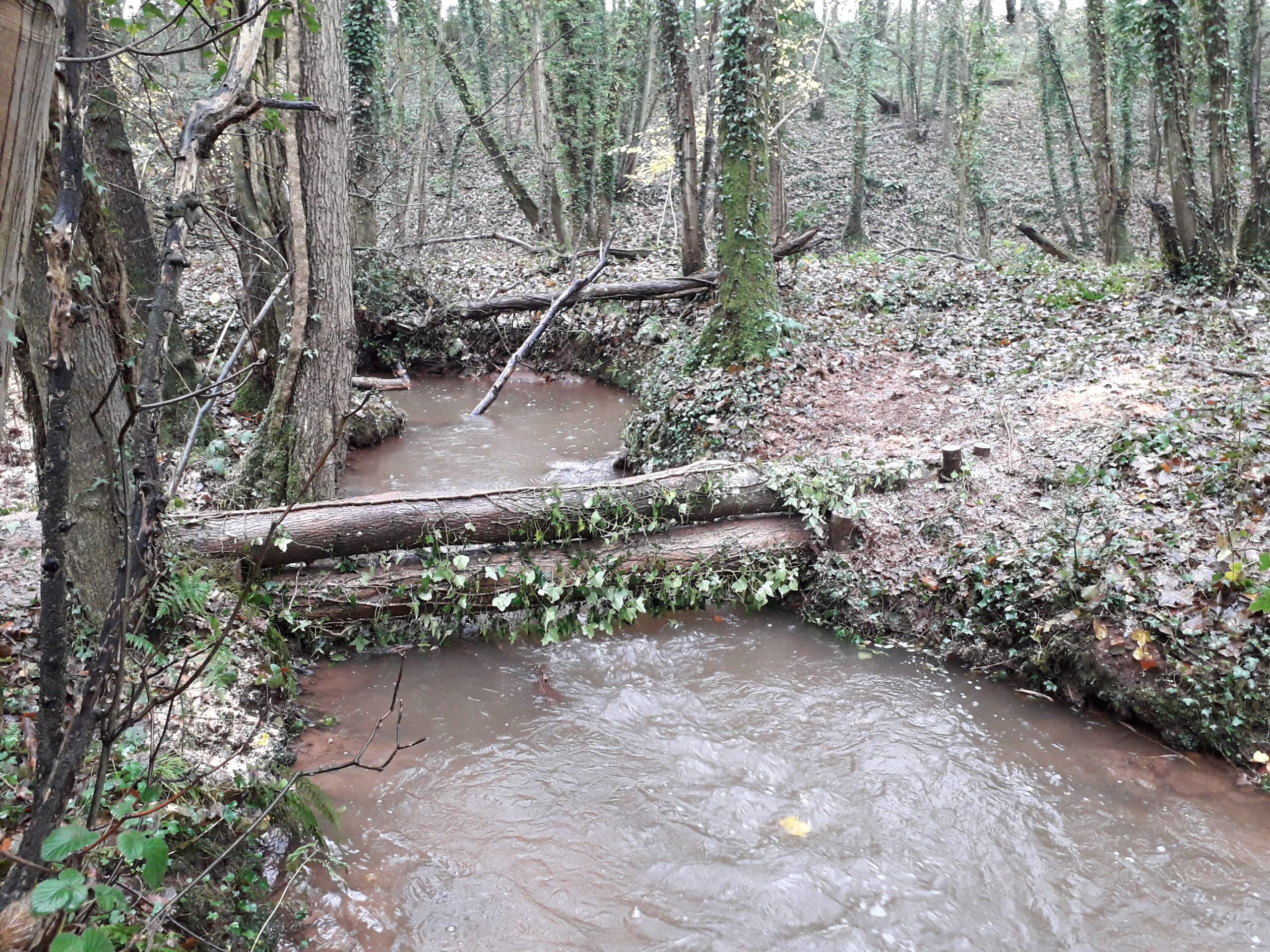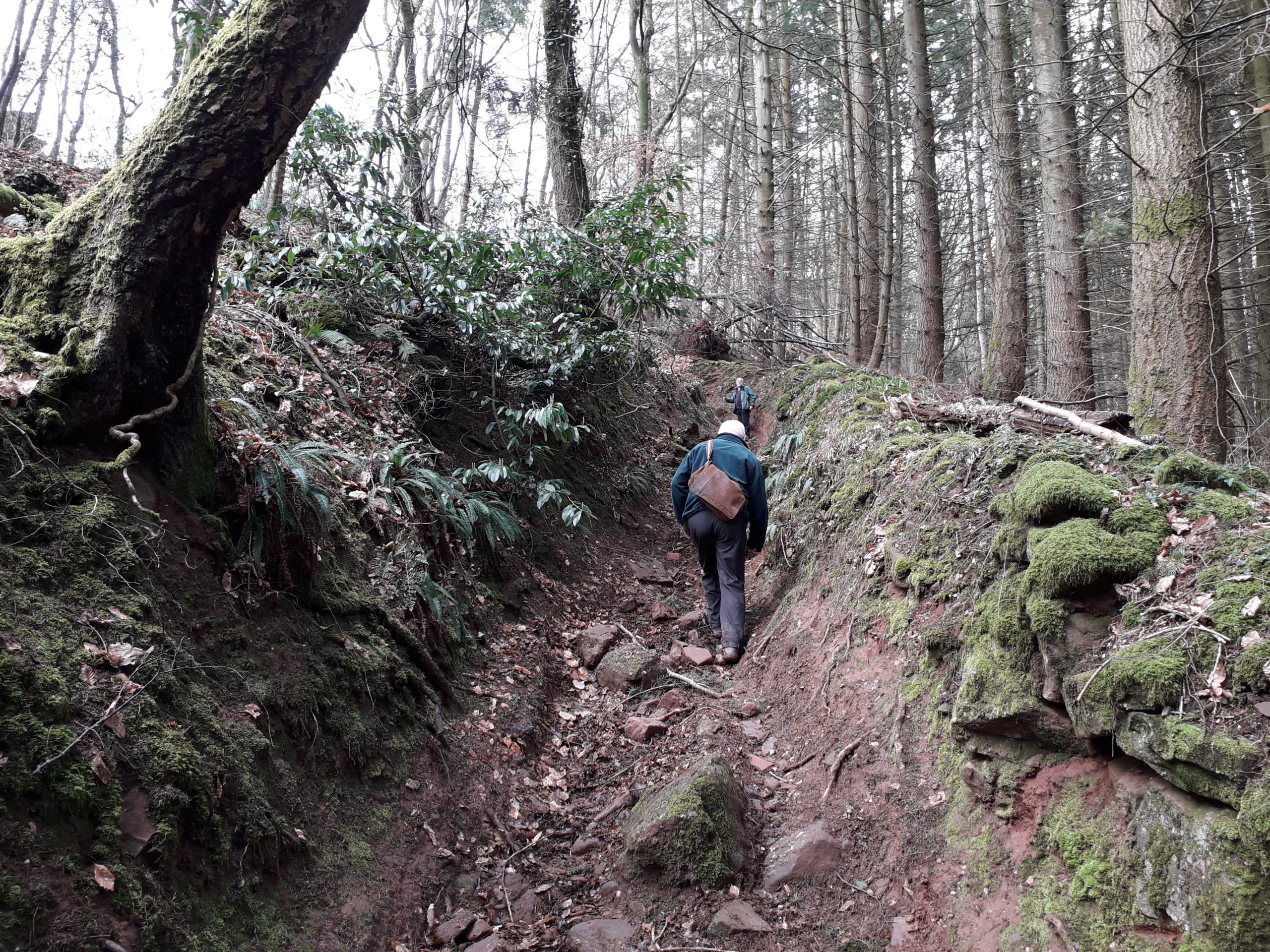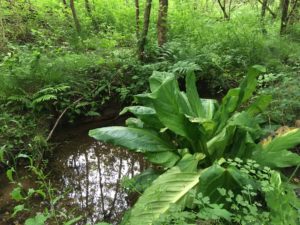This is partnership project between the AONB unit and Monmouthshire County Council, National Farmers Union (Wales), Gwent Wildlife Trust, Natural Resources Wales, Woodland Trust, Monmouthshire Meadows, Wye and Usk Foundation and more recently with the Environment Agency, Forest of Dean District Council and Herefordshire Wildlife Trust.
In summary, we are working with landowners and managers, interested parties and the public to develop practical, sustainable solutions that address land management, water run-off, access and invasive non-native species (INNS), helping our river ecosystems and our communities become more resilient as our climate changes. The project has adopted a whole-catchment approach and currently covers the Angidy, Catbrook and White Brook catchments in Wales and the Valley Brook catchment in England.
Natural Flood Management (NFM) is the principle of working with natural processes to help slow the flow of water down through the catchment during high rainfall events, which as we know, are becoming more common. This can be done by: 1) making the ground more porous, enhancing its ability to hold water, through improved soil management, and 2) physically holding water back with natural structures like ponds (from large retention ponds to small garden ponds), hedges planted across slopes, leaky dams in streams. All theses measures have the added benefits of improving habitats and enhancing biodiversity, and improving water quality through the holding of silt and sediment that would otherwise be washed downstream.
So, we are particularly interested in the land and water management around the headwaters and upper reaches of these catchments, because what happens there directly affects the volume and rate of flow down to the villages of Whitebrook, Llandogo, Tintern and Redbrook and ultimately into the River Wye and downstream communities.
Working with farmers and landowners: In partnership with the Wye & Usk Foundation, we have been providing advice to farmers and landowners on catchment sensitive farming and natural flood management, and funding the installation of small-scale interventions – hedge-planting and fencing, leaky dam schemes, farmyard drainage – that will help to slow the flow of water down the catchments.
We are currently actively working in the Valley Brook catchment (between Coleford and Redbrook) looking for suitable sites to pilot small-scale, natural water management work such as hedge/tree planting, leaky dams, retention ponds. This work will be funded through a small capital works project budget and opportunities will be available to apply for AONB Landscape and Biodiversity Enhancements Grants through the Sustainable Development Fund.
Addressing long-term access issues: The project’s access initiative is focussing on the green lanes or Unclassified County Roads (UCRs) around Tintern and Whitebrook. These beautiful, historic lanes are facing pressures that are resulting in their degradation, so much so in some cases that they are no longer useable by many people. These lanes are vital in linking rural communities and are a key part of the historic fabric of the AONB. Working in partnership with Monmouthshire County Council, we are piloting nature-based solutions to reduce the run-off and erosion of the less degraded routes, and agreeing the next steps for the severely degraded routes. Read about our latest Green Infrastructure Improvements.
Invasive Non-Native Species (INNS): We are targeting Japanese Knotweed, American Skunk Cabbage and Himalayan Balsam, which spread rapidly and are a major problem, especially on riverbanks, suppressing all other plant growth. Do visit our Wye Invasive Species Project (WISP) for useful INNS resources, news and events and for details about how you can get involved.

New leaky dam in the Angidy catchment


Degraded green lane, Whitebrook


American Skunk Cabbage at Cleddon